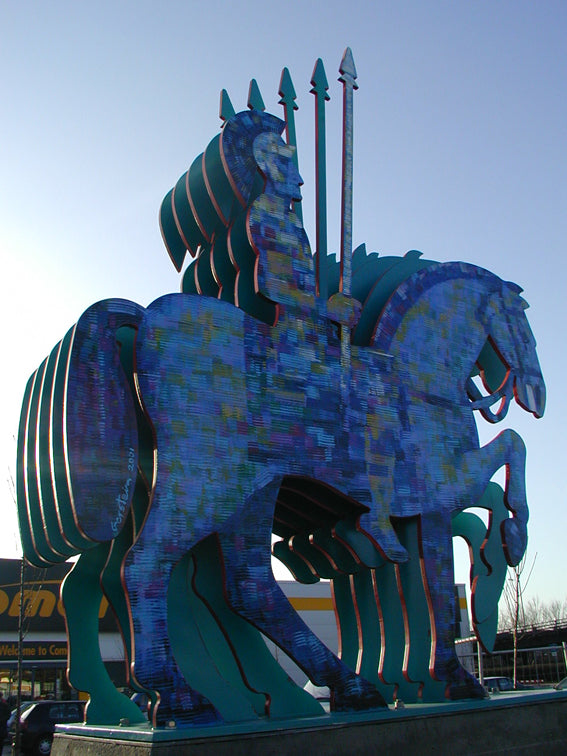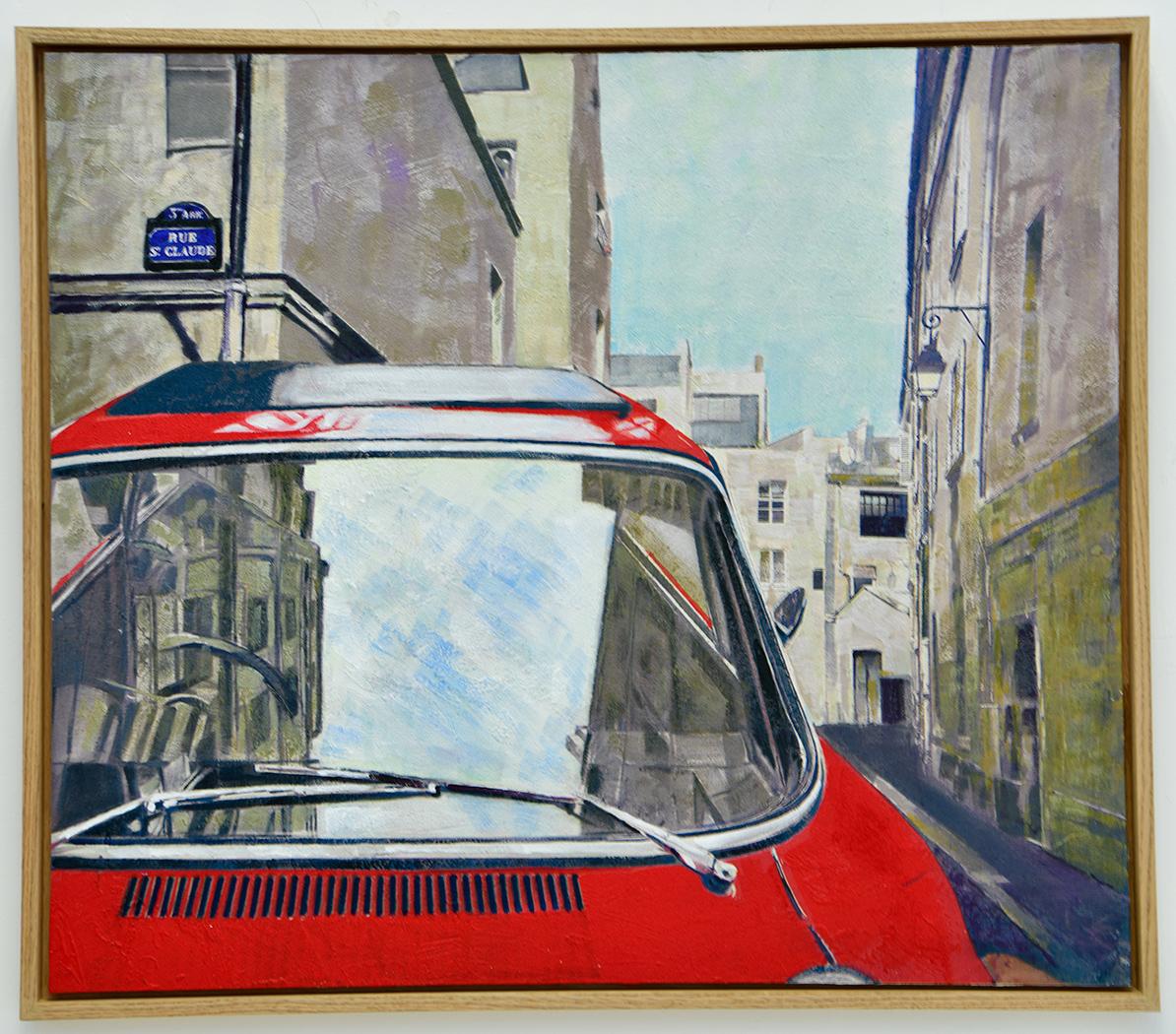At the busy Gallows Corner roundabout in Romford, Greater London, stands a vivid and commanding figure that surprises and delights passersby. It’s not a politician or local hero, but a Roman soldier. Moreover, it is a Roman soldier transformed through the vibrant imagination of celebrated artist David Gerstein. Known for his energetic, colorful sculptures that brighten public spaces around the world, Gerstein brought his unique aesthetic to London in 2000 with Roman Warrior, a five-meter-tall public sculpture that fuses ancient history with a distinctly modern visual language.
Though the subject is classical, the approach is unmistakably contemporary. From a distance, Roman Warrior catches the eye with its striking palette, bold reds, sunny yellows, and deep blues, applied using glossy automotive paints. Up close, one notices the layered construction that defines much of Gerstein’s work. Cut from flat sheets of steel, the sculpture appears multidimensional, almost as if it’s vibrating with motion. This interplay between flatness and depth is central to Gerstein’s artistic language. Although his work is sculptural, it retains the painterly sensibility he developed earlier in his career, bridging the two disciplines in a truly innovative way.
Moreover, Roman Warrior demonstrates Gerstein’s ongoing interest in movement, energy, and narrative. While the soldier stands still, his posture suggests readiness, perhaps even anticipation, as though he’s poised on the edge of action. This sense of life, of animation within stillness, is a hallmark of Gerstein’s public sculptures. They are meant not only to decorate but to provoke curiosity, spark emotion, and engage viewers in a visual dialogue.
Notably, the location of the sculpture adds an additional layer of meaning. Gallows Corner, named for its grim history as an execution site, has become a key traffic junction in East London. In this unexpected setting, the Roman soldier becomes a symbolic figure, perhaps a guardian. Or perhaps a reminder of the layered histories that define the city. David Gerstein’s choice to bring a Roman icon into a modern British context encourages reflection on cultural legacy, shared histories, and the passage of time.
Transitioning from studio pieces and gallery installations to public art is no small feat, but Gerstein has mastered this shift with remarkable ease. His work is instantly recognizable, not only for its style but also for its intention. Gerstein aims to invite connection by using familiar forms, accessible color schemes, and expressive lines. In this way, he bridges the gap between fine art and everyday life. Roman Warrior exemplifies this philosophy perfectly.
David Gerstein’s Roman Warrior is far more than a decorative landmark. It’s a thoughtful fusion of ancient and modern, of stillness and movement, of public space and personal story. Through this sculpture, Gerstein brings a touch of wonder, color, and cultural conversation to London’s streets. Reminding everyone who passes by that art has the power to reframe even the most ordinary of places.
See David Gerstein's Public Sculptures here.



